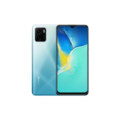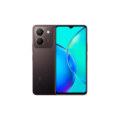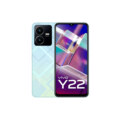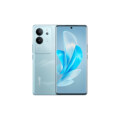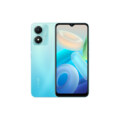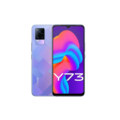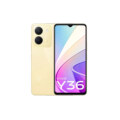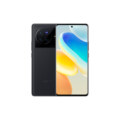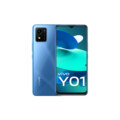Vivo V23e
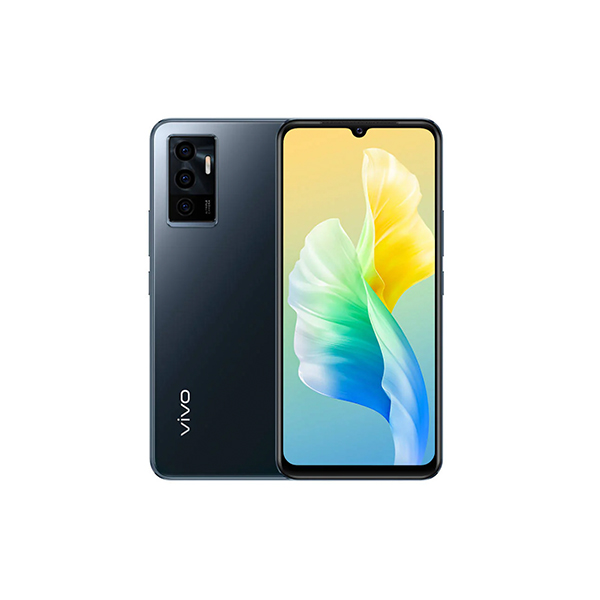

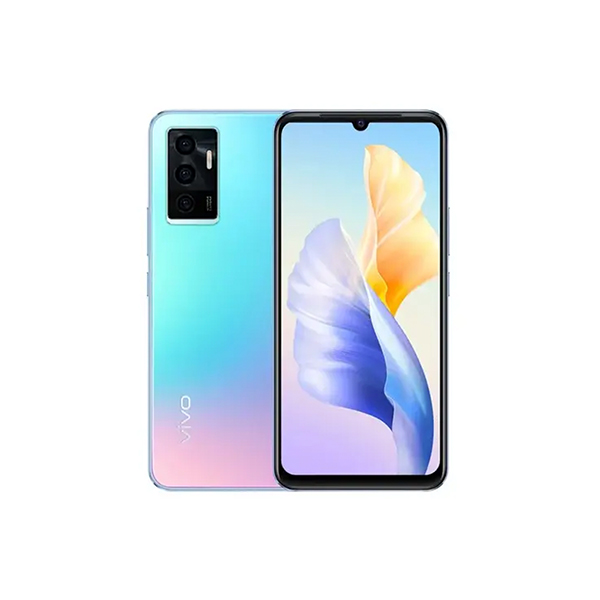
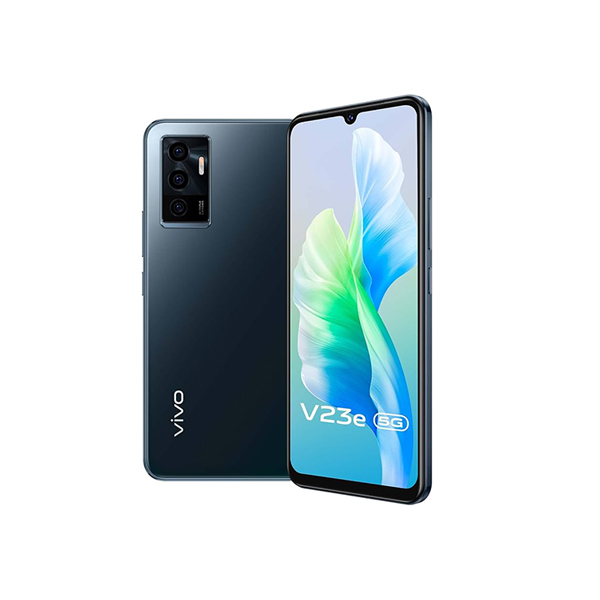
Specs
General
| Device Type | Vivo Phone |
| Announced | 09 November, 2021 |
| Released | 11 November, 2021 |
| Status | Available |
Design
| Dimensions | 160.9 x 74.3 x 7.4 mm |
| Weight | 172 g |
| Colors | Sunshine Coast, moonlight shadow |
Display
| Refresh Rate | 60 Hz |
| Display Type Display Technology => A number of display technologies and types used in mobile phones => TFT (Thin Film Transistor), IPS (In-Place Switching), OLED (Organic Light Emitting Diode), AMOLED (Active-Matrix Organic Light-Emitting Diode), Super AMOLED (an even advanced version of AMOLED), Resistive Touchscreen (Resistive touchscreens contain two layer of conductive material with a very small gap between them which acts as a resistance), Capacitive Touchsceen (Capacitive touchscreen technology consists of a layer of glass coated with a transparent conductor) | AMOLED |
| Size | 6.44 inches |
| Resolution | 1080 x 2400 pixels |
| Display Colors Display Colors is refers to the number of different shades of colors that the screen is capable of displaying => 64K colors, 256K colors and 16 million colors, Obviously 16M is highest available range of colors and better than others. | 16M Colors |
| Pixel Density Pixel Density (PPI) is refers to the concentration of pixels on a particular display, measured in pixels per inch (ppi). Pixel density is calculated by dividing the diagonal pixel resolution of a display by its diagonal size, higher pixel density better display quality. | ~ 409 ppi |
| Touch Screen | Capacitive Touchscreen, Multitouch |
| Secondary Display | No |
Camera
| Front Camera | 50 MP, f/2.0, (wide) |
| Camera Setup | Triple |
| Main Camera Camera is able to capture photographs and usually videos, The most important characteristics of a camera are the resolution (measured in megapixels), lens focus type (fixed or automatic), higher megapixel cameras are known to capture higher quality photos, but not always a good measurement of the photos quality. |
64 MP, f/1.8, 26mm (wide) 8 MP, f/2.2, 120˚, 16mm (ultrawide) 2 MP, f/2.4, (macro) |
| Video | 4K@30fps, 1080p@30fps, gyro-EIS |
| Camera Features | Phase detection, touch focus, Geo-tagging, HDR, panorama |
| Flash Flash Light => There is commonly two types of flash lights are used in camera mobile phones, LED Flash (LED flash offers lower power consumption with drive circuitry that takes up very little room, LEDs can be strobed faster than any other light source), Xenon Flash (xenon flash produces an extremely intense full-spectrum white light for a very short duration) | LED flash |
Hardware
| Operating System OS => Every computer system run on a base software called Operating System (OS). Operating System controls all basic operations of the computer (such as smartphone, PDAs, tablet computers and other handheld devices). The Operating System allows the user to install and run third party applications (apps), apps are used to add new functionality to the device. | Android 11 |
| Chipset Chipset is a group of integrated circuits designed to perform one or a more dedicated functions, often with real time computing constraints, Popular smartphones are equipped with more advanced embedded chipsets that can do many different tasks depending on their programming. | Mediatek Helio G96 |
| CPU CPU (Central Processing Unit) mostly known as processors, CPU processes instructions in order to carry out certain functions that make your device operate properly. Processors are often described as the brain of computers, smartphones and tablets, Smartphones and tablets rely on processors to carry out their every task, Processors are an incredibly important factor in selecting any type of computing device, including your smartphone. | Octa-core (2x2.05 GHz Cortex-A76 & 6x2.0 GHz Cortex-A55) |
| Architecture | 64 bit |
| Fabrication | 12 nm |
| GPU GPU (Graphics Processing Unit) is a single-chip processor designed to rapidly manipulate and alter memory to accelerate the creation of images in a frame buffer intended for output to a display, This includes things such as lighting effects, object transformations, and 3D motion. | Mali-G57 MC2 |
| RAM (Memory) RAM (Random Access Memory) is a type of computer memory that can be accessed randomly, any byte of memory can be accessed without touching the preceding bytes that allows information to be stored and accessed quickly from random locations. RAM is the most common type of memory found in computer systems, smartphones, tablets and other electronic devices. | 8 GB |
| Internal Storage Internal Storage is a data storage space (flash memory) mostly used in smartphones, tablets and other electronic devices where operating system, apps, music, photos, videos, files and other user data Is stored. | 128GB Built-in |
| Card Slot Memory Card Slot is a special slot for inserting a memory card. Memory cards allow you to expand the phone's built-in memory, A memory card (sometimes called a flash memory card or a storage card) is a small storage medium used to store data such as text, pictures, audio, and video, for use on small, portable or remote computing devices such as mobile phones, mp3 players, digital cameras. | |
| Sensors Sensors are electronic components that detects and responds to some type of input from the physical environment. The specific input could be light, heat, motion, moisture, pressure and location, The output is generally a signal that is converted to use in computing systems, a location sensor, such as a GPS receiver is able to detect current location of your electronic device. | Accelerometer, Compass, Fingerprint (under display, optical), Gyro, Proximity |
Network
| SIM TYPE SIM (Subscriber Identity Module) is a small card that contains mobile network subscriber's account information. This allows the phone using the card to attach to a mobile network. The SIM card is most commonly associated with GSM and UMTS mobile networks. Moving a SIM card from one phone to another allows a subscriber to switch mobile phones without having to contact their mobile network carrier. SIM cards can also be used by a phone to store limited amounts of data, such as phone numbers and text messages. | Nano SIM |
| SIM Technology | Dual Sim, Dual Standby (Nano-SIM) |
| 2G Network | GSM 850 / 900 / 1800 / 1900 |
| 3G Network | HSDPA 850 / 900 / 1700(AWS) / 1900 / 2100 |
| 4G Network | LTE band 1(2100), 3(1800), 5(850), 7(2600), 8(900), 20(800), 28(700), 38(2600), 40(2300), 41(2500) |
Multimedia
| FM Radio | |
| Stereo Speakers | NO |
| Loudspeaker | YES |
| Audio Jack | 3.5mm Audio Jack |
| Audio Features | 32-bit/192kHz Hi-Res audio |
Connectivity
| Wi-fi Wi-Fi is a popular wireless networking technology using radio waves to provide high-speed network connections that allows devices to communicate without cords or cables, Wi-Fi is increasingly becoming the preferred mode of internet connectivity all over the world. | Wi-Fi 802.11 a/b/g/n/ac, dual-band, Wi-Fi Direct |
| Bluetooth Bluetooth is a wireless communications technology for exchanging data between mobile phones, headsets, computers and other network devices over short distances without wires, Bluetooth technology was primarily designed to support simple wireless networking of personal consumer devices. | v5.2 with A2DP, LE, apt-X HD |
| GPS GPS The Global Positioning System is a satellite-based radio navigation system, GPS permits users to determine their position, velocity and the time 24 hours a day, in all weather, anywhere in the world, In order to locate your position, your device or GPS receiver must have a clear view of the sky. | A-GPS support, & GLONASS, BDS, GALILEO |
| USB | USB Type-C, USB On-The-Go |
| EDGE EDGE (Enhanced Data GSM Environment) is a wireless network technology generally considered the next step in the 2G network offers data transfer rates up to four times faster than ordinary GSM networks, Generally, EDGE is used for the purpose of wireless data transfer, such as sharing pictures and videos or browsing the Internet via a mobile phone connection. | |
| GPRS GPRS (General Packet Radio Service) is a packet oriented mobile data service on the 2G and 3G cellular communication system's global system for mobile communications (GSM), Generally, GPRS is used for the purpose of wireless data transfer, such as sharing pictures and videos or browsing the Internet via a mobile phone connection. | |
| Speed | 3G HSPA, 4G LTE-A |
| Wi-fi Hotspot | |
| NFC NFC (Near field communication) is a set of standards for smartphones and similar devices to establish peer-to-peer radio communications with each other by touching them together or bringing them into proximity, usually no more than a few inches. |
Features
| Messaging | SMS(threaded view), MMS, Email, Push Mail, IM |
| Web Browser Web Browser => a web browser is a software application used to locate, retrieve and display content on the World Wide Web, including Web pages, images, video and other files, The primary function of a web browser is to render HTML, the code used to design or markup webpages. | HTML5 |
| Games | Built-in + Downloadable |
| Torch |
Battery
| Battery Type Battery Type => Cell phones run on various kinds of batteries depending on the manufacturer, phone size or shape and features. There are basically four types of cell phone batteries => Lithium Polymer, Lithium Ion, Nickel Metal Hydride and Nickel Cadmium. | Li-Ion (Lithium Ion) |
| Capacity Battery Capacity is a measure (typically in Amp-hr) of the charge stored by the battery, and is determined by the mass of active material contained in the battery. The battery capacity represents the maximum amount of energy that can be extracted from the battery under certain conditions. | 4050 mAh |
| Placement | Non-removable |
| Wireless Charging Wireless Charging (Inductive Charging) uses an electromagnetic field to transfer energy between two objects. This is usually done with a charging station. Energy is sent through an inductive coupling to an electrical device, which can then use that energy to charge batteries or run the device. | No |
| Extra |
44W wired 69% in 30 min (advertised) |
Introduction:
The Vivo V23e, launched as part of Vivo’s mid-range lineup, offers a stylish design and focuses heavily on camera performance, particularly for selfie enthusiasts. With its sleek form factor, AMOLED display, and triple-camera setup, the V23e aims to provide a balanced experience across design, performance, and photography at a competitive price. In this review, we will dive into its design, display, performance, camera system, battery life, software, and more, concluding with a summary of its pros and cons.
Specifications at a Glance
- Display: 6.44-inch AMOLED, Full HD+ (1080 x 2400 pixels, 409 ppi)
- Processor: MediaTek Helio G96
- RAM: 8 GB
- Storage Options: 128 GB (expandable via microSD)
- Rear Cameras: Triple setup (64 MP wide f/1.9, 8 MP ultra-wide f/2.2, 2 MP macro f/2.4)
- Front Camera: 50 MP wide f/2.0
- Battery: 4050 mAh with 44W fast charging
- Operating System: Funtouch OS 12 (based on Android 11)
- Dimensions: 160.9 x 74.3 x 7.4 mm
- Weight: 172 grams
Design and Build Quality
- Aesthetics:
The Vivo V23e boasts a premium design with a glass front and back, housed in a slim and lightweight frame. It has a smooth matte finish on the rear, making it resistant to fingerprints. Its sleek profile and gradient color options like “Sunshine Coast” and “Moonlight Shadow” make it stand out as a stylish device. - Durability:
While the Vivo V23e doesn’t offer any IP-rated water or dust resistance, its build quality feels solid, especially for a mid-range phone. The glass back, however, can be prone to cracking if dropped without a protective case. - Ergonomics:
At 7.4 mm thick and weighing just 172 grams, the Vivo V23e is quite comfortable to hold and operate one-handed. The device feels light yet sturdy, making it ideal for extended usage without fatigue.
Overall, the Vivo V23e delivers a sleek, attractive design that competes with higher-end devices in terms of aesthetics, though it lacks durability features like water resistance.
Display
- Specifications:
- Size: 6.44-inch AMOLED
- Resolution: 2400 x 1080 pixels (409 ppi)
- Brightness: 430 nits (typical), up to 600 nits (HBM)
- HDR: No
- Refresh Rate: 60Hz
- Performance:
The 6.44-inch AMOLED display on the Vivo V23e offers vivid colors and deep blacks, providing an excellent experience for media consumption, gaming, and general use. The Full HD+ resolution ensures that text, images, and videos are sharp and crisp. However, the lack of a higher refresh rate (like 90Hz or 120Hz) might be noticeable to users accustomed to smoother scrolling and transitions. - Brightness and Color Accuracy:
The display performs well outdoors with decent brightness levels and good visibility under sunlight. It also offers good color accuracy and saturation, making it a solid choice for watching videos and playing games.
In summary, the Vivo V23e’s display is impressive for its class, offering rich visuals, though it falls short of some competitors that offer higher refresh rates.
Performance
- Hardware:
- Processor: MediaTek Helio G96
- GPU: Mali-G57 MC2
- RAM: 8 GB
- Storage: 128 GB (expandable via microSD)
- Performance Evaluation:
The MediaTek Helio G96 chipset powering the Vivo V23e is a capable mid-range performer. It handles day-to-day tasks like browsing, social media, and light gaming smoothly. While it’s not a powerhouse for heavy gaming, it does support popular titles like PUBG and Call of Duty Mobile on medium settings with decent performance. - Multitasking and RAM Management:
With 8 GB of RAM, the V23e handles multitasking well, keeping apps running in the background without noticeable slowdowns. The user experience remains fluid in most situations, although more demanding tasks may cause slight delays. - Benchmark Scores:
In benchmark tests, the Vivo V23e scores moderately, positioning it as a competent mid-range device. It’s suitable for users seeking reliable everyday performance without requiring high-end gaming capabilities.
Overall, the Vivo V23e delivers reliable performance for most users but is not intended for power users who demand heavy gaming or intensive multitasking.
Camera
- Rear Cameras:
- Primary Lens: 64 MP wide-angle, f/1.9 aperture
- Ultra-Wide Lens: 8 MP ultra-wide, f/2.2 aperture
- Macro Lens: 2 MP macro, f/2.4 aperture
- Front Camera:
- Selfie Camera: 50 MP, f/2.0 aperture
- Camera Performance:
- Daylight Photography: The 64 MP main sensor captures bright and detailed images in well-lit conditions, with good dynamic range and color accuracy. The ultra-wide lens provides versatility for landscape shots, though details can sometimes appear softer.
- Low-Light Photography: In low light, the camera struggles a bit with noise, but the built-in Night Mode helps in capturing better-lit, albeit slightly grainy, shots.
- Selfie Camera: The 50 MP front camera is one of the standout features of the Vivo V23e. It excels at capturing high-quality selfies with vibrant colors and sharp details, even in low light, thanks to its AI beauty enhancements and Night Mode.
- Video Recording:
The Vivo V23e supports 4K video recording at 30 fps. Video quality is decent, but stabilization could be better, as it lacks Optical Image Stabilization (OIS).
In conclusion, the camera performance on the Vivo V23e is solid, especially for selfie lovers, but low-light photography and video stabilization leave room for improvement.
Battery Life
- Specifications:
- Battery Capacity: 4050 mAh
- Charging Speed: 44W fast charging (capable of charging 69% in 30 minutes)
- Performance:
The 4050 mAh battery offers all-day performance for moderate users, allowing for up to a full day of usage with regular activities like browsing, social media, and media consumption. Heavy users may need to charge the phone by late afternoon, but the 44W fast charging ensures minimal downtime.
In summary, the Vivo V23e provides solid battery life with fast charging that quickly gets you back to full power, making it reliable for users on the go.
Software
- Operating System:
- Funtouch OS 12 (based on Android 11)
- User Experience:
Funtouch OS 12 offers a clean and customizable experience with features like dark mode, gestures, and themes. However, the UI comes with pre-installed bloatware, which may be a slight annoyance for some users. Regular software updates and security patches are also provided, ensuring that the device remains secure and up-to-date.
In summary, Vivo’s Funtouch OS provides a decent software experience with room for personalization, although the presence of pre-installed apps might be a drawback for some.
Pros & Cons
Pros:
- Impressive Selfie Camera: The 50 MP front camera delivers excellent selfies, especially for social media enthusiasts.
- Stylish Design: The slim, lightweight build with gradient finishes makes the phone visually appealing.
- AMOLED Display: The 6.44-inch AMOLED display offers vibrant colors and deep blacks, ideal for media consumption.
- Fast Charging: The 44W fast charging feature is a standout, providing a quick charge when needed.
- Expandable Storage: With microSD card support, you can expand the storage easily.
Cons:
- No 120Hz Refresh Rate: The 60Hz refresh rate is a downside in a competitive market where higher refresh rates are common.
- Average Low-Light Camera Performance: The rear camera struggles with low-light conditions, especially the ultra-wide lens.
- No OIS: Lack of optical image stabilization impacts the quality of low-light photography and video stability.
- Bloatware: Funtouch OS comes with unnecessary pre-installed apps that some users may find annoying.
Conclusion
The Vivo V23e is a well-rounded mid-range smartphone that excels in design and selfie camera performance. It offers a vibrant AMOLED display, fast charging, and a decent overall experience for daily use. However, it’s not without its shortcomings, particularly in terms of low-light camera performance and the lack of a higher refresh rate. For selfie enthusiasts and those seeking a stylish and capable device, the Vivo V23e is a solid option in the mid-range market
Review
Disclaimer Note
All prices in Pakistan is updated daily from the price list provided by local shops and dealers but we can not guarantee that the information / price on this page is 100% correct (Human error is possible), always visit your local shop for exact cell phone cost & rate.

